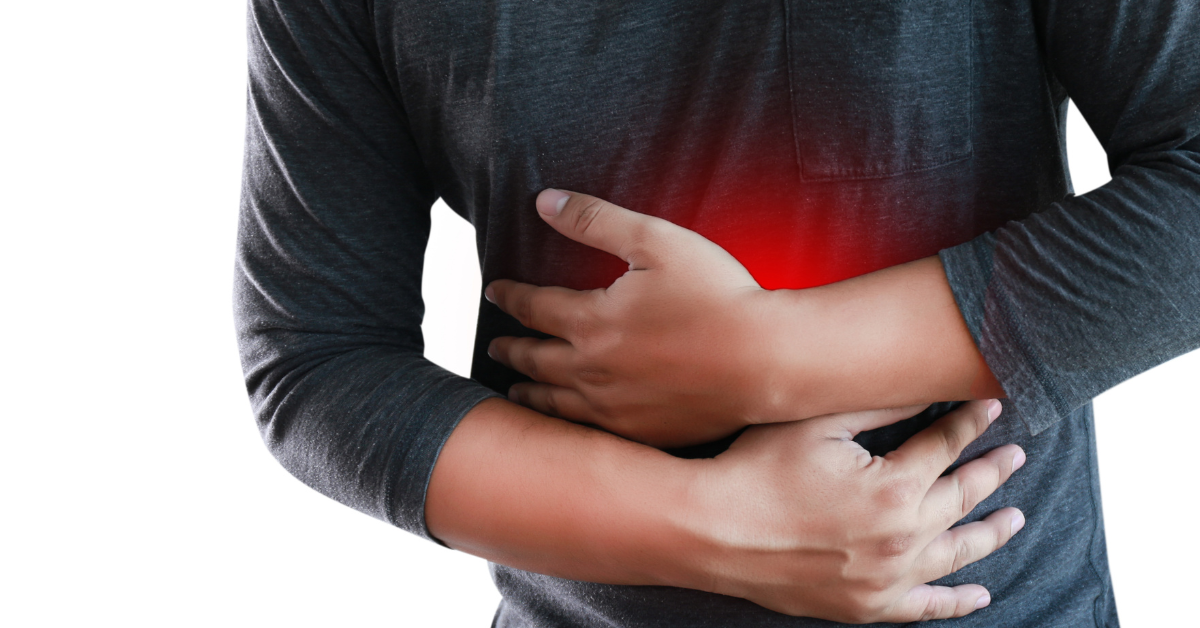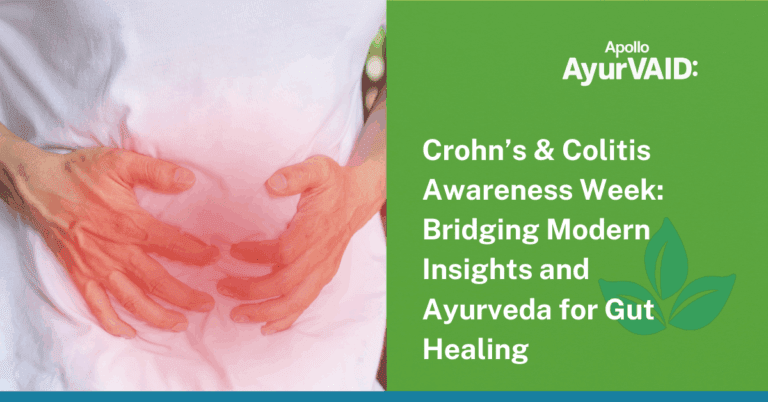Introduction
Do you often feel that burning sensation in the chest after you eat? This irritating symptom, a burning sensation in the chest, is acid reflux or heartburn. Occasional heartburn is normal, but when it appears frequently, it may be GERD (Gastro-Esophageal Reflux Disease), a chronic condition wherein the acidic content of the stomach goes back to the esophagus, filling again and again, causing irritation of the sensitive mucosal lining. Patients are usually advised to make lifestyle changes and dietary modifications to treat acid reflux. Understanding the foods to avoid with gastric reflux is an initial requirement for finding relief. he best diet for acid reflux disease involves realising, eliminating, and avoiding trigger foods while concentrating on those favourable to digestive health. Let’s explore those in this blog.

Foods To Avoid with Gastric Reflux
According to Ayurveda, the symptoms associated with acid reflux are similar to a condition called Amlapitta, which arises from an aggravated Pitta Dosha (the bodily humor representing fire and transformation). Causes like incompatible food combinations, contaminated foods, and consumption of foods in large quantities that are sour, hot, or acidic alter the gut balance and cause increased acidity, heartburn, and indigestion. Both modern medicine and Ayurveda emphasise the role of diet in managing the condition of acid reflux.
Identifying and avoiding trigger foods is essential to managing acid reflux. Several categories of food and beverages are known to commonly exacerbate symptoms:
- Fatty Foods: High-fat meals are one of the worst triggers because they tend to decrease the pressure of the lower esophageal sphincter (LES)-the valve designed to prevent stomach contents from moving in the reverse direction. Additionally, they delay stomach emptying so that food remains longer in the organ, increasing the risk for reflux. Fried food, fatty cuts of meat, full-fat dairy products, and rich sauces are examples of this.
- Chocolate: This delectable treat includes several compounds that may induce the relaxation of the LES, making it easier for stomach acid to back up. As a result, most recommendations for patients suffering from acid reflux include cutting back on chocolate intake.
- Citrus Fruits and Tomatoes: They are highly acidic and directly irritate the esophagus lining, eventually resulting in heartburn. This includes oranges, lemons, grapefruits, limes, tomato sauce, and tomatoes themselves. While warm lemon water with sugar might be helpful for some after a meal, citrus can be a trigger for others.
- Spicy Foods: Foods seasoned with chili pepper and other spices irritate the esophagus and worsen acid reflux symptoms. General recommendations usually include avoiding spicy foods, mustard, vinegar, pepper, and excessive salt.
- Mint: Both peppermint and spearmint are said to relax the LES, resulting in increased reflux. Avoiding mint-flavored candies, teas, and other products may help.
- Caffeinated Beverages: Coffee and tea can raise the acidity levels in the stomach and relax the LES. Cutting down on or eliminating these types of beverages may improve symptoms.
- Alcohol: Alcohol relaxes the LES and increases the production of stomach acid; both consequences lead to the condition known as acid reflux. Abstinence from all forms of alcohol is commonly advised.
- Carbonated Beverages: Such beverages exert pressure on the abdominal cavity to force their contents back into the esophagus. You should use non-carbonated alternatives instead.
- Garlic and Onions: Those pungent vegetables appear to evoke acid reflux in some people. Attention to reactions when consuming those foods will determine if one has to minimize them.
- Other Possible Triggers include salads and cheeses, butter, and candies, after which some people may experience reflux. Identifying personal trigger foods through careful observation is crucial.
According to Ayurveda, these are foods that typically aggravate the Pitta dosha due to their hot, sharp, and sour characteristics. For example, spicy and fermented foods are considered Pitta Prakopaka (Pitta-aggravating), leading to increased Ushna (hot) and Drava (liquid) properties manifesting as hyperacidity. Similarly, irregular eating habits and improper food combinations (Viruddha ahara) disrupt the Agni (digestive fire) and contribute to the imbalance that manifests as Amlapitta.
Diet For Acid Reflux Disease
An effective diet for acid reflux disease is not limited to trigger avoidance but also includes soothing foods that can contribute to balance. Part of the ideal diet would be having meals that are small, frequent, and do not cause an overload to the abdomen with eating. Add to this an alkaline diet like potatoes, fruits such as bananas, which are a natural antacid, and probiotic buttermilk for a good digestive system. Drinking lukewarm water and refraining from eating at least 2-3 hours before sleeping is advisable.
According to Ayurveda, a holistic system is necessary fortreating acid reflux, which can be achieved by balancing the Pitta dosha through diet and lifestyle.
- Alkaline foods: Potatoes can relieve acidity.
- Fruits- bananas, papaya, apples, pomegranate, melon, and Indian gooseberry (Amla) aid digestion and control acid secretion. Drinking amla juice on an empty stomach heals gastric erosion and balances Pitta.
- Dairy- cold, fat-free milk and buttermilk with cumin might relieve acidity.
- Vegetables- green and root vegetables, bitter gourd, ridge gourd, ash gourd, and fresh vegetables can alleviate the symptoms.
- Grains & Pulses- aged rice, barley, wheat, and green gram are beneficial.
- Herbal Teas: Ginger, fennel, basil, peppermint, chamomile, Tulasi, mint, and cumin tea are all good at promoting digestion.
- Others include coconut water, oatmeal, almonds, and honey consumption.
Lifestyle Recommendations:
- Eat small-to-moderate meals, chewing slowly.
- Do not lie down or engage in heavy activities after meals.
- Wear loose clothing.
- Raise the head of the bed while sleeping.
- Avoid smoking, drinking, and stress.
- Drink adequate warm water, eat at regular times, and fast in moderation.
Visit an Ayurveda doctor for information tailored to the individual.

Conclusion
Acid reflux and GERD treatments are greatly affected by lifestyle and food choices. Observing food-related bodily responses may help decrease symptoms and increase general digestive health with important dietary changes as long as these form part of a holistic diet for acid reflux disease. Do remember that for persistent or very severe symptoms, it is always advisable to consult a healthcare professional or an Ayurveda practitioner for personalization.
References
Tufail, T (2022). GASTROESOPHAGEAL REFLUX DISEASE. DIET FACTOR (Journal of Nutritional & Food Sciences).
![]()
Surdea-Blaga, T et al. (2019). Food and Gastroesophageal Reflux Disease. Current medicinal chemistry.
![]()
Ghosh, K (2011). A PHARMACOGNOSTICAL & PHYSIOCHEMICAL STUDY OF BENINCASA HISPIDA WITH AYURVEDIC REVIEW.
![]()
Bhagat, R B, Daulatkar, K K (2024). Managing Acid Reflux: A Dietetic Approach to Alleviating Aamlapitta and GERD Symptoms. International Journal of Ayurveda and Pharma Research.
![]()
KS, A et al. (2025). A randomized controlled clinical study on the efficacy of Chinnadi Kashaya in Amlapitta (Chronic Gastritis). Journal of Ayurveda and Integrated Medical Sciences.
![]()






